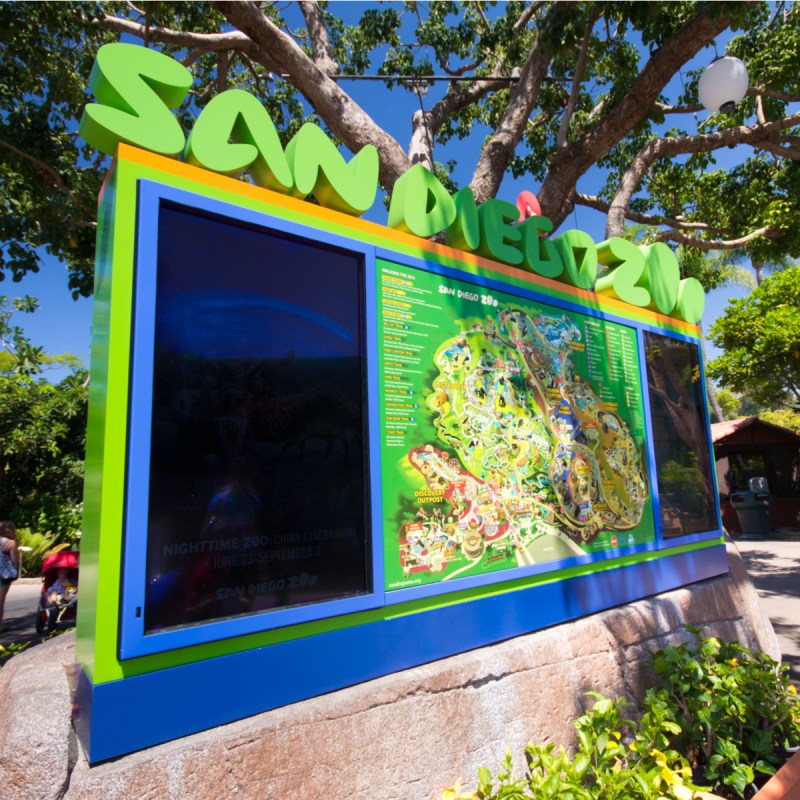
The San Diego Zoo is already considered one of the best of its kind in the world, and it just got a little bigger and better.
Videos by TravelAwaits
Zoo officials and the San Diego Zoo Wildlife Alliance have opened the doors at the Denny Sanford Wildlife Explorers Basecamp, a 3.2-acre site to give visitors an up-close look at nature.
The state-of-the-art, multi-ecosystem experience offers high-tech, interactive opportunities designed to inspire visitors to become future caretakers of the planet.
“It really highlights species that you never really get to interact with,” Wildlife Alliance ambassador Marco Wendt told KGTV.
Inside Basecamp, guests will use all of the senses to visit with different species and interact with them.
Children of all ages, and adults, will crawl around a massive tree house, explore in water play elements, and use touch screens and microscopes to observe species, animation, and dynamic lighting in whole-room scented environments.
“Children are the future conservationists of our planet,” Wendt said. “We need to make sure we invest in the explorers and youth of the world… inspire them of the beauty of nature and move forward and be the best stewards of our planet.”
Basecamp, which is included with admission to the zoo, is made up of eight different buildings and habitats in four separate zones: Rain Forest, Wild Woods, Marsh Meadows, and Desert Dunes.
Rain Forest
This zone includes a 10,000-square-foot building where visitors will interact with and learn about invertebrates such as leaf cutter ants, spiders, scorpions, stick insects, and other crustaceans, arachnids, and insects.
Visitors will experience fragrant honeycombs and watch a working beehive in action. Another section includes butterflies, grasshoppers, and more.
Wild Woods
This area allows visitors to interact with squirrel monkeys, coatis, and other animals native to South and Central America.
The area features a 20-foot-tall treehouse, a suspension bridge, and a net tunnel to a spiral staircase. There is also a waterfall, stream, and splash pad, as well as a bluff area with boulders to allow for exploration.
March Meadows
This section features swamps and estuaries filled with frogs, fish, and other wildlife that call this habitat home. It revolves around a two-story building with 7,000 square feet of digital media, classroom spaces, and immersive environments.
Wildlife in the building include snakes, crocodiles, turtles, lizards, and the endangered Fijian iguanas.
The neighboring Ambassadors Headquarters includes a two-toed sloth, a prehensile-tailed porcupine, and more.
Desert Dunes
This one is pretty self explanatory, with a dry desert theme. There are boulders to climb and explore, with reptile sculptures and petroglyphs hidden among them
There are a number of shaded caves where guests can experience what it’s like to be a prairie dog, burrowing owl, or fennec fox.
Entertainment And Education
Conservation and education are at the heart of Basecamp, but so is fun. Designers wanted to make it an area where play and excitement enhance the educational elements.
“The name reflects the underlying goal of the area,” Shawn Dixon, COO for the Wildlife Alliance, told the Times of San Diego. “We are calling it Basecamp because it’s designed to serve as a launch pad for budding conservationists of all ages to be inspired to care for and protect the future of our planet.”
The Basecamp is located at the site of the former children’s zoo. It is open during regular zoo hours, which are currently 9 a.m.–6 p.m. daily.
For some of our most recent travel news:
